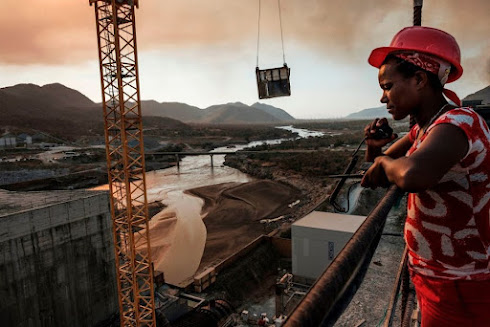Floodplain Wetlands
This blog series is not a case against dam building in the Nile Basin, its too late to back down from the GERD and AHD, but there is a need to further dissect ecosystem impacts and how those become political, particularly when understanding Sudan's more reluctant support for the GERD. Some of the most prominent ecosystems affected are floodplains. After all, one of the primary motivations for dam construction is the reduction in flooding and more consistent river flow to facilitate intensive agriculture.
As with 'Dam Discourse I' this is not just a Nile Basin issue, with case studies from around the continent important for understanding the implication of dams on Nile riparians. The impacts of the Bakolori Dam on the Sokoto Valley in Nigeria is useful for understanding how the GERD is worrying communities downstream in regard to their agricultural practices. Sudan's supposed benefit from the GERD is the control of flooding and river flow to make way for intensive, irrigated agriculture, the Bakolori Dam had the same intention. Activity on the floodplain wetlands along the River Sokoto in Nigeria reflects agricultural practices in wetland areas in Sudan. 50,000 people in the Sokoto Valley have come to be supported by an advanced agricultural system and fishery, adapted to the seasonal flooding and fish breeding patterns.
Wetland benefit comes from using season logic of interplay between wetlands and drylands built up over generations. When the river floods, the floodplain can be used to grow flood-tolerant crops like rice and cultivate fisheries from the influx of fish migrating to breed. When water recedes in the dry season, farmers grow 'relay crops' from the residual soil moisture. In the Sokoto Valley these are cotton, groundnuts and cowpea. In other areas of Africa, thee is an integration of wetland and dryland farming. In Serra Leone dryland crops require labour at different times of the year to flood-tolerant wetland crops, supporting a migratory farming community.
So when there is disruption, its not just to ecosystems, we can see wetlands support entire socio-economic practices developed over generations. These nuances are missed from large-scale, top-down development and end up having negative net consequences and the economic profit of reclamation is much less than developers initially indicate, as was proven by the Bakolori Dam when it disrupted Sokoto Valley wetlands. River and floodplain ecosystems are closely adapted to a river’s flooding cycle, so subtle changes soon become significant. Damming rivers causes losses in flora and fauna, with fish stocks in the Sokoto Valley falling after the Bakolri Dam filled from a combination of reduced flood extent and loss of nutrients from sediment being trapped behind the dam. The number of households containing fishermen soon fell from 17% to 8%.
Most significantly, the value of food production lost to reduced flooding in from Bakolori Dam, 3.1 million Naira (currency of Nigeria) exceeded the 2 million Naira gained in irrigated crops produced, the opposite intention of the dam.

Planned irrigation work as the next phase of the Bakolori Dam project in context of original floodplain areas (Source)
So coming back to the GERD. Sudan relies heavily on flood recession agriculture and already the GERD has had impacts. In 2020, Sudan noted abrupt changes in both sediment (important for soil fertility) and lower flooding levels when Ethiopia shut three of the four diversion outlets for the water. The problems for wetlands in the Nile Basin are far beyond the loss of biodiversity, thus it is crucial riparians work closely to manage inevitable socio-economic changes.




Comments
Post a Comment